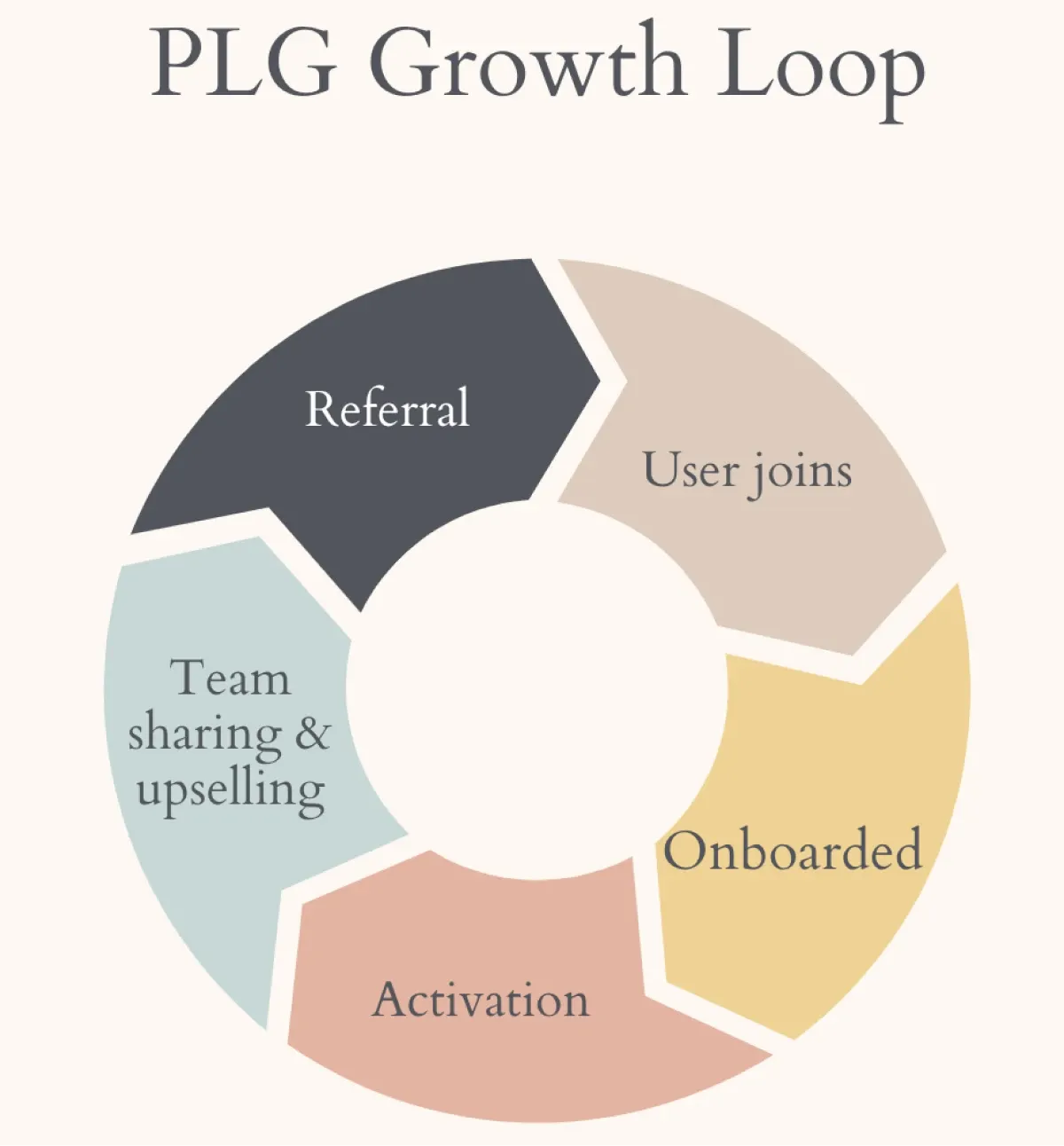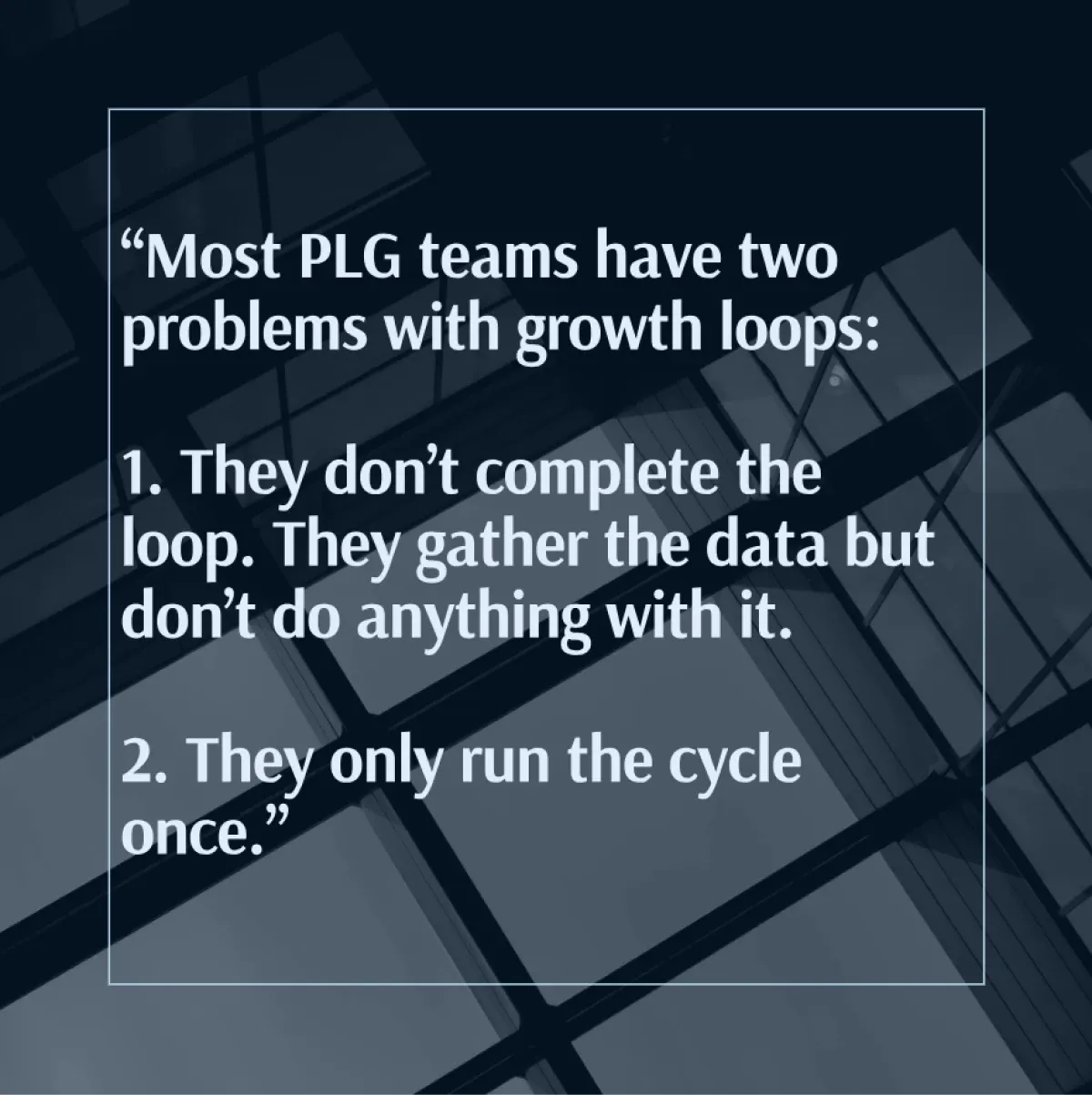Growth loops are one of those topics that generates a TON of intellectual thought posting on LinkedIn, but few companies running effective ones at scale.
There’s often a huge gap between the proposed and actual “difficulty” of one of the most important parts of your loop: your time to value.
In product land, one of the most discussed types of loops is the product-led growth loop.
In a PLG loop, you only have so long to demonstrate value because your user has little invested (money and time-wise) in your product and a million other options. TTV is so key, in fact, that I would argue it is the most important metric in a PLG loop.
The most meticulously planned growth loop can fail because it assumes the user has a longer attention span (and tolerance for friction) than most of us actually do. We use so many tools these days, always sign up to try new stuff, etc., and that means our actual desire and ability to follow through into full usage is often lower than we think.
Why?
For a PLG growth loop to work, your flywheel has to do many things, but nothing is more important than your products’ ability to provoke a desire to share the product with other teammates and folks in your user’s network. Without this, it falls on its face immediately.
The strongest way to invoke that behavior is to provide:
- Maximum value
- As fast as possible
- With an extremely easy way to refer people
To do this, your product’s UX and onboarding flow must be optimized for that “Aha moment,” that split second where a lightbulb goes off for a user and they suddenly get it: “Wow, this tool is pretty cool! I can do X in 5 minutes as opposed to 30 in our current tool. I should tell Bob and Jane about this!”
As I mentioned at the top, this is easier said than done because for most products, you can have:
- Multiple personas
- Multiple user flows and use cases
- Different geographies, levels of feature parity, etc.
So this is no easy task.
How can it be done?
The answer lies in user intent data, and leveraging it to optimize both your PLG growth loop and your products’ UX for maximum EV. Let’s dig into this a bit more.
What is a growth loop?
When I mention a growth loop, it’s important to clarify I don’t mean a generic growth motion or marketing and sales cycle. Whereas a growth motion is a broader term to capture a wide variety of sales and marketing efforts, a growth loop is a specific flow in which every activity leads into another, and creates a self-fulfilling positive cycle.
It’s a loop — a circle - and a critical part of the PLG motion.
Every effort and stage inherently propels into another part of the loop, eventually coming back around to reinforce the first stage.
Pretty neat right? Let’s walk through an example.
Let’s say you’re a product leader at TaskStar, a task management system. You've been tasked with mapping out a new PLG growth loop, because your traditional enterprise motion does work for this new, lower-level freemium product.
How do you go about building your PLG growth loop?

Starting your loop
The first step is obviously to initially attract your users to your product. No shit! Like almost every PLG company, you’ve decided to offer your product for free using a free trial of your premium plan, with conversion into either a limited free plan or a premium full-scope plan after 2 weeks.
You know you need to attract folks so you decide that you're going to:
- Produce lots of great blog content to rank on Google and get organic users
- Do a social media ad push that highlights your new product and the free trial
- Be super active in relevant subreddits, forums, and communities and try and get a grassroots movement going
your hope is that through these efforts you'll start to attract an initial batch of new users into the free trial.
Plus, you've ensured the free trial is not super skimpy. It has access to almost all of your features, including many of the ones only in your premium plan.
Onboarding and Time to Value
You've got folks on your sign-up page, and you're starting to get new user emails. You now must execute a clear and curated user onboarding experience that varies depending upon their user Persona. You use custom-targeted nudges and language that your marketing team has tested to get folks through the signup funnel.
Once they're in, you have an amazing and intuitive product tour setup, clear tooltips, and occasional helpful in-app messages that shepherd your new users through their first few sessions. You keep it light but informative.
A key here is to ensure that folks are exposed to and incentivized to check out some of your premium features. Don’t be overly sales-y, but also ensure they see the value and can witness how it'll help their workflow.
Share, share, share
Once folks are in your product, there's a clear call to action with in-app messaging around sharing access to the free version with their teammates. You encourage them to send those invites, perhaps even offering an incentive or discount to those who do.
if you have a strong and truly compelling product, this is where a PLG motion becomes so valuable. Your users, even the new ones, become evangelists and you have to empower them to easily share it with their teammates and network.
We've all had experiences with products that are so good that we feel compelled to post about them in Slack or tweet about them. You want to live up to this bar to ensure that your product is strong enough to lead a PLG growth loop.
Upselling is crucial
Obviously, your business is not sustainable if you don't actually convert some of these folks to paid users. You need to have a strong upsell motion that uses the value folks have experienced with the premium trial to quickly move them onto the paid plan.
One of your superpowers here is if you're great at collecting granular user data and behavior. Imagine that you see a marketing team using your free version to run their content operations but that they are bumping up against your free version limits. You can contact them with a discount on the offer and reference capabilities. What might be relevant to them might be irrelevant to an engineering team or a CEO, so be sure to tailor and personalize your outreach based on the user persona.
Closing, and re-starting the loop
As your user base grows, they continue to invite more and more users to the tool, both because it adds a lot of value and because a certain department or sector of the organization has upgraded to a premium plan (a company champion can be so helpful!) You could also establish a referral program that further incentivizes folks to bring in more users
This motion feeds into the next version of the loop, as more and more users enter the circle and experience value, refer folks in, and upgrade, only to start it once again.

User intent
I was talking with our founder James about PLG growth loops, and he made a great point about a lot of the PLG companies in the B2B SaaS space:
*“Most PLG teams have two problems with growth loops:
- They don’t complete the loop. They gather the data but don’t do anything with it.
- They only run the cycle once.”*
Obviously, this is an issue. If you fail to complete your growth loop, particularly to generate referrals and new users through the strength of your product, AND you don’t create a repeating cycle, you’re in deep trouble as a PLG company.
One of the biggest ways we see our product experiences help our customers here at Command AI is the greatly heightened level of user intent data that they get. This helps them run their PLG growth loop faster, more effectively, and more profitably, all while helping users and improving UX.
There are two primary ways Command AI unlocks this for PLG growth loops.
Natural language trumps any and all quantitative data
First, when you sync all of your documentation, help info, and product tips into Copilot and go live, you give your users a natural language option to ask questions. When you compare this to traditional data that might barely scrape together your live agent chats, user session recordings, or traffic to each of your help pages; it’s like comparing the BatMobile with a kid's tricycle. With Copilot you get Hawaii water level of clear insight into what your users are frustrated by, asking about, and curious to learn, all in their own parlance.
Then, you can see how your Copilot responds, whether it's all folks' queries, where there are continued dead ends or frustrations, and generally get a ridiculous level of insight into your users’ intent and emotional state.
Intent data becomes better in-app messaging and UX improvements
Secondly, you can take all of those insights and create much more targeted and nuanced in-app messages, nudges, and tours for your users, reducing your TTV. As we discussed, this is one of the strongest ways to supercharge a PLG growth loop.
The faster the user hits that Aha moment and finds value, the faster they'll be to invite other users and upgrade to a paid plan.
Plus, these insights can become concrete improvements on your product roadmap, and produces a rewarding cycle where your user intent data becomes fuel not only for a better PLG growth loop but also for a better core product as well.
Creating better PLG growth loops
The best part about a user intent-driven PLG growth loop is that it is repeatable, scalable, and self-educating. As you gather more and more Copilot responses, nudge engagement metrics, and other great UX insights, you’ll be able to further optimize your growth loop and repeat it over and over until you’ve fine-tuned it as much as possible.
Plus, if a product pivot or a new user persona emerges, you have a repeatable blueprint and internal team mental model to draw on as you build a new growth loop instead of starting from scratch.

















